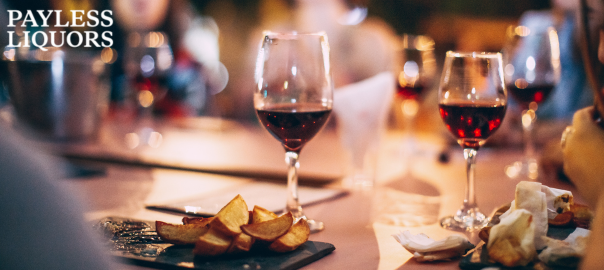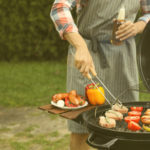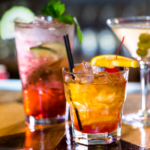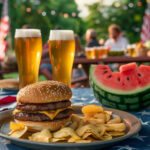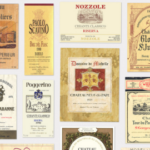Choosing the right wine can often feel like navigating through a labyrinth of labels, vintages, and varieties. It’s an age-old conundrum, one that in today’s world often involves online research, store aisles, and maybe a slight panic when faced with an unexpected dinner invitation or a milestone celebration.
Fear not, aspiring sommeliers and wine enthusiasts! By understanding some simple principles of wine pairing and having a few choice bottles on hand, you can become the ultimate host and the person everyone consults for wine recommendations. This extensive guide by our team at Payless Liquors seeks to demystify the art of wine selection, helping you choose the perfect bottle to elevate every significant moment and everyday enjoyment.
Understanding Wine Basics
Before we leap into the intricacies of wine pairing, it’s essential to grasp the fundamentals of wine. Wine can be largely categorized into red, white, and rosé, and within these broad categories, there exists an immense diversity of flavors and aromas influenced by grape variety, origin, climate, and winemaking techniques.
Varietal vs. Regional Wines
Some wines are named after the grape variety from which they are made, known as varietals. For instance, Chardonnay, Cabernet Sauvignon, and Merlot are all varietal wines. On the other hand, regional wines are named after the region where the grapes are grown, such as Bordeaux from France, Chianti from Italy, and Rioja from Spain. Regional wines often denote a particular style or blend traditional to that area.
Tasting Notes
Every bottle provides a story through its tasting notes. From descriptions of its appearance, nose, body, and finish, these notes can guide you on what to expect from the wine before tasting. They could mention anything from the wine’s color—ranging from pale straw to inky black—to its aroma profile, such as “hints of black currant and cedar.”
Pairing Principles
Wine pairing is essentially the art of matching the right wine with the right food to enhance both. The acidity, sweetness, body, and flavor intensity of the wine should complement or contrast with the dish it’s being served with. For example, high-acidity wines like Champagne cut through the richness of fried or fatty foods, while a robust red like Cabernet Sauvignon stands up to a juicy steak.
Pairings Made in Heaven
Now, we’ll explore the best wine selections for various activities and foods you might encounter.
Affordable Yet Elegant
If you’re on a budget but still want to impress, don’t dismiss cheap wines. Look for Chilean or Argentinian Malbecs, Spanish Tempranillos, or South African Chenin Blancs. These options often over-deliver on quality for their price and are versatile with a range of foods.
Romantic Evenings
For a cozy night in or a more formal date, opt for a smooth and seductive Pinot Noir. This red wine is celebrated for its light to medium body, typically displaying flavors of ripe red fruits and earthy undertones. For a candle-lit dinner, consider oysters with a crisp Chablis – a perfect match for a romantic evening.
Celebrating Milestones
Big occasions call for top-shelf wines. If it’s a milestone like a graduation or a promotion, uncork a bottle of vintage Champagne or a bold Napa Valley Cabernet Sauvignon. These wines not only taste celebratory but also have the aging potential that signifies a memory to keep.
Casual Gatherings
When the company is casual, go for a wine that’s not too fussy. Prosecco or Cava is excellent for brunch or an afternoon on the patio, while a crowd-pleasing Sauvignon Blanc or a mellow Pinot Noir is perfect for larger, laid-back groups.
Picnics and Outdoor Events
Light, refreshing wines are ideal for picnics or outdoor events, where the focus is on easy enjoyment. Rosé, with its versatile nature and suitability for a wide range of foods, is a picnic classic. Another great option for a sunny day is a bottle of Albariño, a crisp white wine from Spain with a touch of salinity that pairs beautifully with seafood.
Seasonal Selections
Wine can also be selected based on the season, with climate and preference for particular types of food coming into play.
What to Drink in the Summer
In the summertime, the preference tends towards lighter-bodied, chilled red wines, or crisp and aromatic white wines. Rosé wines, made from red grapes with limited skin contact, provide a cooling and tasty option for hot weather. Light and fruity reds like Beaujolais or Pinot Noir can even be slightly chilled for added refreshment.
Wines for Cozy Winters
Winters call for wines with a bit more body and warmth. Full-bodied red wines like Malbecs and Cabernet Sauvignons match the heartier meals typical of the season. Additionally, fortified wines like Port or Sherry can act as delightful digestifs to round off a rich meal.
Transitional Tastes in Spring and Fall
Transitional seasons allow for a mix of red and white wines, signaling the shift from lighter salads to more substantial stews. Opt for wines that balance the elements of both, like medium-bodied Chardonnays or Merlots that can pair with a variety of dishes.
Wine for Special Cuisines
Different cuisines require different wines to bring out their best flavors. Here are some suggestions for common types of international cuisine:
Italian and Mediterranean
Italian and Mediterranean dishes, characterized by their use of olive oil, tomatoes, and aromatic herbs, pair well with Italian reds like Chianti and Sangiovese, as well as white wines such as Vermentino and Pinot Grigio.
Asian and Spicy
The complex flavors and spice of Asian cuisines demand a wine that can cut through and complement the heat. Off-dry Rieslings, Alsatian Gewürztraminers, or sparkling wines like Prosecco or Moscato d’Asti are able partners for dishes from sushi to Sichuan.
American and BBQ
For the smoky, tangy flavors of American BBQ, look to Zinfandels and Syrahs. These red wines match the robustness of the BBQ, with their bold fruit flavors and hints of pepper and tobacco.
French and High Cuisine
The delicacy of French haute cuisine is often best accompanied by classic French wines. For whites, Sancerre or Pouilly-Fumé can match a creamy dish, while a Pauillac or Pomerol can stand up to a rich Bordeaux beef dish.
Cellar Essentials
A well-stocked wine cellar doesn’t have to break the bank. There are a few essential types of wine that you should always have on hand for any situation.
For the White Wine Lover
A versatile Chardonnay is a must for white wine enthusiasts. It can range from crisp and unoaked to buttery and rich, catering to a wide range of preferences. Additionally, a bottle of bright Sauvignon Blanc and a more aromatic and slightly off-dry Riesling provide options for various occasions.
Red Wines to Keep Ready
In the red wine department, ensure you have a bottle each of Pinot Noir, Merlot, and Cabernet Sauvignon. These choices cover the full spectrum of red wine characteristics and pair well with many different foods. For something more specific, don’t forget a bottle of earthy and food-friendly Barbera for Italian nights.
Sparkling and Specialty Wines
Every cellar should host at least one special bottle of Champagne or sparkling wine for those memorable celebratory moments. It’s also wise to store a sweet wine like Sauternes or Ice Wine for pairing with desserts and a dry sherry or Madeira for cooking and sipping by the fireplace.
Shopping and Storing Wine
Knowing where and how to find and keep your wines is as crucial as knowing which wine to choose. Wine storage affects the taste, so proper care is vital for preserving its quality.
Buying Wine
When selecting a wine, look for a reputable source that can offer advice and has proper storage conditions. Online retailers offer convenience, but local wine shops often provide expertise and sometimes allow tastings.
Storing Wine
For short-term storage (a few months to a few years), keep wine in a cool, dark place with a consistent temperature, like a wine fridge or a dedicated cellar. Long-term storage requires more specific conditions, including humidity and minimal light exposure, to prevent corks from drying out and compromising the wine.
Enhancing Your Wine Knowledge
Just like a fine wine matures with time, so does your understanding and appreciation of it. Joining a wine club, attending tastings, and reading books by renowned sommeliers can deepen your knowledge and refine your palate.
Wine Club Membership
Wine clubs often offer curated selections, providing an opportunity to taste and learn about different wines. Some even offer educational resources or access to exclusive events, elevating the experience beyond just receiving bottles in the mail.
Tastings and Tours
Local wine tastings and vineyard tours are fantastic ways to learn about wine while enjoying the experience. Many establishments offer guided tastings with food pairings, which can be incredibly instructive and enjoyable.
Educational Resources
Books like “The Wine Bible” by Karen MacNeil or “The World Atlas of Wine” by Hugh Johnson and Jancis Robinson can serve as comprehensive guides. Online courses, like those offered by Wine Spectator or the Wine & Spirit Education Trust (WSET), can provide structured learning opportunities, leading to certifications that you can dramatically whip out at dinner parties.
Summary
Wine is a part of life’s most memorable moments, elevating both the celebration and the everyday meal. By understanding the basics of wine, the art of pairing, and the nuances of different types and vintages, you can select the perfect bottle for any occasion. Whether it’s the intimate setting of a date night or the grandeur of a milestone event, the right wine can enhance the experience, creating lasting memories and a deeper appreciation for life’s delicious details. Shall we raise a glass to your newly acquired wisdom in wine? Cheers to your enological adventures, and may your cellar always remain abundant and varied!
By now, you should feel equipped to explore the vast world of wine with confidence and enthusiasm. Remember, the perfect wine is not just about the price tag or the label—it’s about the company you’re with and the setting in which you enjoy it. Take the time to savor the process of selection and the pleasure of sharing a fine bottle. Cheers to your wine exploration!

